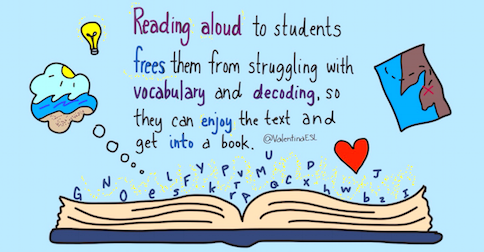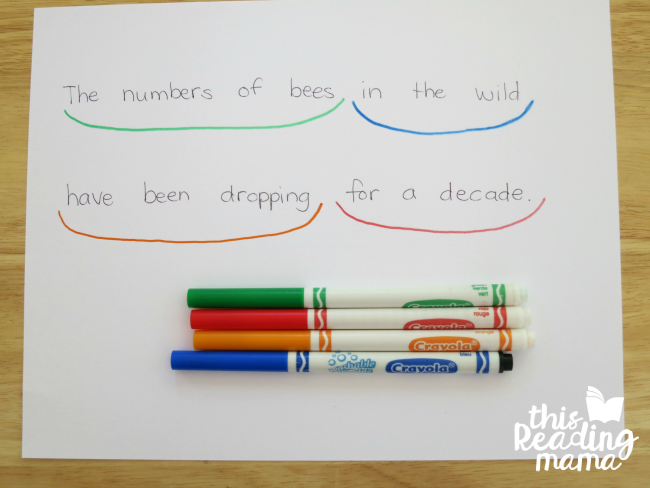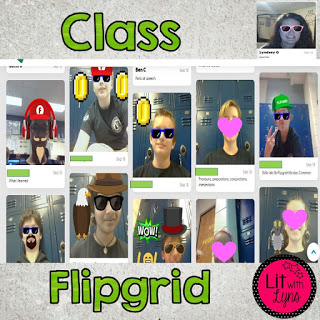Fluency is one of the foundations of reading. Students can understand what they read if they are reading with expression, accuracy, and speed. If you are a content teacher other than English or Language Arts, fluency may seem like something that doesn’t have a place in your classroom. The good thing about developing fluency is that all you need is a text! And every class from mechanics to biology to social studies has texts for students to read.
After identifying the text that students will be reading, the next step is to help them with accuracy, phrasing, rate, punctuation, and expression. Hanging these free posters on your wall can be a helpful reminder, but ways you can practice these in class are by simply rereading the texts. In Fluency: Instructional Guidelines and Student Activities, the Texas Education Agency states that the best strategy for developing reading fluency is to provide your students with many opportunities to read the same passage orally several times. With that, here are some simple ways teachers of any subject can develop student’s fluency.
Strategies for whole-group
As teachers, we model a lot for our kiddos. Modeled reading is the beginning of developing fluency. In our school particularly, we have a process for introducing a new text. Students listen to us do a masterful read first, then partner read, and then read on their own. Students can read a fourth time at home for homework or from a parent or guardian reading to them. According to Reading Rockets, having students read a text four times is sufficient to improve fluency.
Reading aloud is not just for elementary students; it’s for middle and high school students too. It’s especially beneficial for multilingual learners. In the article “Top ESL Reading Strategies”, the author states that many ESL students say that when they read something for the first time out loud, they understand half of what they read because they are paying attention to their pronunciation or their own voice distracts them. This is why reading aloud to them first is so powerful for comprehension and not just for the little ones.
Another whole-group strategy is choral reading. Choral reading is great for multilingual learners, young learners, or struggling readers because it boosts their confidence and they are less worried about what they may sound like to others. I especially love this strategy with my newcomer and beginning English proficiency level students because it really lowers the affective filter for them. Echo reading can also be beneficial. It is similar to choral reading but students just repeat after you instead of in unison.We do this a lot with my high school emergent bilinguals and even though they may think it’s silly, I can hear their confidence rise as they continue to repeat after me.
Strategies for partner practice
After letting students hear a masterful read, they should then practice reading it out loud themselves. This may be in the form of choral or echo reading, or students can do some paired reading. During paired reading, students take turns reading out loud with each other. I like to have students read sentence by sentence, or point by point like my emergent bilinguals like to call it! They read in chunks and I have them summarize what they read for each paragraph with some sentence stems or frames. I might also have them sketch what they read for understanding.
As they read, this is a good time to have them practice one or all of the aspects of the reading posters above. Focusing on one aspect of fluency might be better at first so they don’t feel overwhelmed in thinking they must do all in one reading. The Owl Teacher has a great anchor chart for reading with expression with punctuation.
Another strategy that students can work on in pairs is scooping. I honestly remember doing this in elementary school and I thought it was so fun! Scooping involves the practice of having students group words that go together with a “scoop” underneath it. Scooping helps students read aloud in a more natural way instead of a robotic way that students sometimes sound like when reading word for word.
Strategies and tools for independent practice
My favorite way for students to practice reading on their own is with Flipgrid. Flipgrid is a safe place for students to record themselves reading and re-record if they don’t like the way it sounded, thus having students naturally redo their recordings and practice fluency until it sounds good to them. After they listen to the final product, they can then evaluate themselves with a fluency rubric. This one from Tessa Maguire is free.
Other fun ways for students to practice independently are by using a fluency phone or by reading to a special friend (a favorite stuffed animal). Whatever way you have students read solo, having them reflect on their performance and their timing is powerful to moving the fluency needle. 1st Grade Pandamania says that she has students read 2-4 times with repeated one-minute timings, increasing the amount of text read with each timing. She uses a cheap kitchen or sand timer to have students time themselves.
It’s okay to make mistakes
All in all, fluency is a process that takes time. Using some of these strategies will help students gain fluency in any classroom. It is important to let students know that it is okay if they make mistakes while reading and the emphasis is on the practice piece. It’s also important to note that even teachers make mistakes!
Since I teach high school, we read more advanced texts like Romeo and Juliet. I usually read an adapted text with my emergent bilinguals, but I do like to expose them to the original version so they can see what Shakespeare and grade-level text look like. Do I read Shakespeare perfectly? No! Can I pronounce all words the correct way? Nope, not all of them! And I let my students know that so they can see that everyone, even teachers, make mistakes.
If students do make mistakes, it’s important not to just correct the errors for them. Teach Mama recommends to ask guiding questions and statements like:
- Think about the letters and the sounds they make.
- Look at the picture and the words you do know. Can you make any connections?
- You just read this word on the previous page and you did it correctly.
Just remember- the key to fluency is to repeat, repeat, and repeat again while boosting their confidence along the way. Give students confidence that they need with reading by using some of these tips from ReadTheory. Hint: the first tip is…you guessed it- it’s okay to make mistakes!








